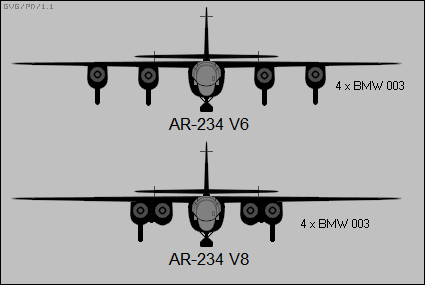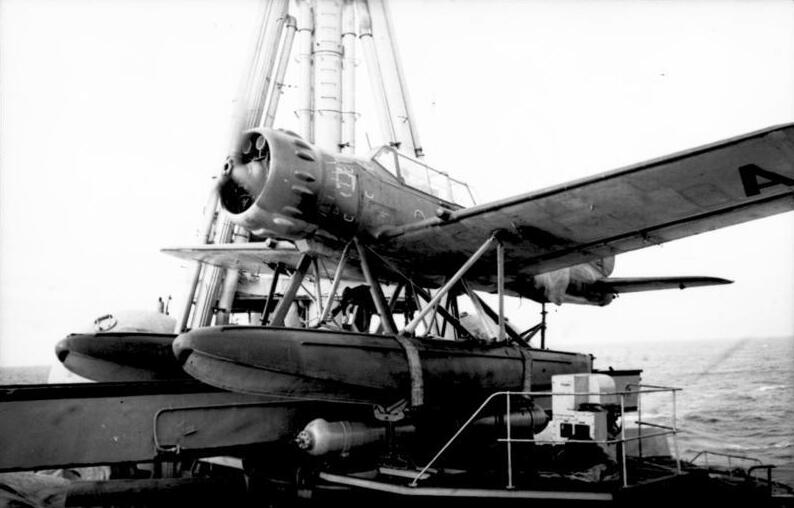|
Walter Blume (aircraft Designer)
Walter Blume (10 January 1896 – 27 May 1964) was a German fighter ace of World War I. During World War I, he flew with two fighter squadrons, ''Jagdstaffel 26'' and ''Jagdstaffel 9'' gaining 28 aerial victories and earning the Iron Cross, Royal House Order of Hohenzollern, and the ''Pour le Merite''.The Aerodrome website page for Blume http://www.theaerodrome.com/aces/germany/blume.php Post World War I he became a prominent aircraft designer for both Albatros and Arado, being one of the pioneers of jet propulsion design in airplanes. Early life and World War I service Walter Blume was born in Hirschberg, Silesia, and originally served in the 5th Silesian Jaeger Battalion in September 1914. After being wounded early in the conflict, he trained as a pilot beginning 30 June 1915.''Above the Lines: The Aces and Fighter Units of the German Air Service, Naval Air Service and Flanders Marine Corps, 1914–1918'', p. 75. He began his flying career in two-seater Aviatik aircraft wi ... [...More Info...] [...Related Items...] OR: [Wikipedia] [Google] [Baidu] |
Jelenia Góra
Jelenia Góra (pron. ; Polish: ; german: Hirschberg im Riesengebirge; Exonym: ''Deer Mountain''; szl, Jelyniŏ Gōra) is a historic city in southwestern Poland, within the historical region of Lower Silesia. Jelenia Góra is situated in the Lower Silesian Voivodeship, close to the Karkonosze mountain range running along the Polish- Czech border – ski resorts such as Karpacz and Szklarska Poręba are situated from the city. Jelenia Góra constitutes a separate urban gmina as well as being the seat of surrounding Karkonosze County (formerly Jelenia Góra County). In 2021 the population of Jelenia Góra was 77,366. The area, including the oldest spa district of Cieplice Śląskie-Zdrój, is one of the most valued recreational and leisure spots in Poland. The city's history dates back to as early as the 10th century, but the settlement was granted town rights under Polish rule in 1288. Jelenia Góra was founded on important trade routes linking the Holy Roman Empire and Boh ... [...More Info...] [...Related Items...] OR: [Wikipedia] [Google] [Baidu] |
Bristol F
Bristol () is a city, ceremonial county and unitary authority in England. Situated on the River Avon, it is bordered by the ceremonial counties of Gloucestershire to the north and Somerset to the south. Bristol is the most populous city in South West England. The wider Bristol Built-up Area is the eleventh most populous urban area in the United Kingdom. Iron Age hillforts and Roman villas were built near the confluence of the rivers Frome and Avon. Around the beginning of the 11th century, the settlement was known as ( Old English: 'the place at the bridge'). Bristol received a royal charter in 1155 and was historically divided between Gloucestershire and Somerset until 1373 when it became a county corporate. From the 13th to the 18th century, Bristol was among the top three English cities, after London, in tax receipts. A major port, Bristol was a starting place for early voyages of exploration to the New World. On a ship out of Bristol in 1497, John Cabot, a Venetian ... [...More Info...] [...Related Items...] OR: [Wikipedia] [Google] [Baidu] |
Soviet Union
The Soviet Union,. officially the Union of Soviet Socialist Republics. (USSR),. was a List of former transcontinental countries#Since 1700, transcontinental country that spanned much of Eurasia from 1922 to 1991. A flagship communist state, it was nominally a Federation, federal union of Republics of the Soviet Union, fifteen national republics; in practice, both Government of the Soviet Union, its government and Economy of the Soviet Union, its economy were highly Soviet-type economic planning, centralized until its final years. It was a one-party state governed by the Communist Party of the Soviet Union, with the city of Moscow serving as its capital as well as that of its largest and most populous republic: the Russian Soviet Federative Socialist Republic, Russian SFSR. Other major cities included Saint Petersburg, Leningrad (Russian SFSR), Kyiv, Kiev (Ukrainian Soviet Socialist Republic, Ukrainian SSR), Minsk (Byelorussian Soviet Socialist Republic, Byelorussian SSR), Tas ... [...More Info...] [...Related Items...] OR: [Wikipedia] [Google] [Baidu] |
Soviet Army
uk, Радянська армія , image = File:Communist star with golden border and red rims.svg , alt = , caption = Emblem of the Soviet Army , start_date = 25 February 1946 , country = (1946–1991)' (1991–1992) , branch = , type = Army , role = Land warfare , size = 3,668,075 active (1991) 4,129,506 reserve (1991) , command_structure = , garrison = , garrison_label = , nickname = "Red Army" , patron = , motto = ''За нашу Советскую Родину!(Za nashu Sovetskuyu Rodinu!)''"For our Soviet Motherland!" , colors = Red and yellow , colors_label = , march ... [...More Info...] [...Related Items...] OR: [Wikipedia] [Google] [Baidu] |
Blume Bl
Blume may refer to: Music * Blume (band), an Italian band Surname * Anna and Bernhard Blume, German artistic photographers * Astrid Blume (1872-1924), Danish educator and temperance advocate * Brian Blume (born 1950), a business partner of Gary Gygax in TSR, Inc., producers of the fantasy role-playing game, Dungeons & Dragons * Carl Ludwig Blume (1796–1862), a German-Dutch botanist, whose botanical abbreviation is Blume * Clemens Blume (1862–1932), a Jesuit hymnologist * Clint Blume (1898–1973), a Major League Baseball player * Danny Blume (born 1960), an American music producer, musician and composer * David Blume, an American permaculture teacher and entrepreneur * Fred H. Blume (1875–1971), a Justice of the Wyoming Supreme Court * Friedrich Blume (1893–1975), a German professor of musicology in Kiel University * Georg Blume, a correspondent in Beijing, China of the German newspapers "Die Zeit" and "taz" * Heinrich Blume, German politician * Holger Blume (born 1 ... [...More Info...] [...Related Items...] OR: [Wikipedia] [Google] [Baidu] |
Arado Ar 234
The Arado Ar 234 ''Blitz'' (English: lightning) is a jet-powered bomber designed and produced by the German aircraft manufacturer Arado. It was the world's first operational turbojet-powered bomber, seeing service during the latter half of the Second World War. Development of the Ar 234 can be traced back to the latter half of 1940 and the request to tender from the Ministry of Aviation to produce a jet-powered high-speed reconnaissance aircraft. Arado was the only respondent with their ''E.370'' design. While its range was beneath that of the Ministry's specification, an initial order for two prototypes was promptly issued to the company, designated ''Ar 234''. While both of the prototypes had been mostly completed prior to the end of 1941, the Junkers Jumo 004 turbojet engines were not available prior to February 1943. Due to engine unreliability, the maiden flight of the Ar 234 V1 was delayed until 30 July 1943. In addition to the original reconnaissance-orientated ''A ... [...More Info...] [...Related Items...] OR: [Wikipedia] [Google] [Baidu] |
Ar 234
The Arado Ar 234 ''Blitz'' (English: lightning) is a jet-powered bomber designed and produced by the German aircraft manufacturer Arado. It was the world's first operational turbojet-powered bomber, seeing service during the latter half of the Second World War. Development of the Ar 234 can be traced back to the latter half of 1940 and the request to tender from the Ministry of Aviation to produce a jet-powered high-speed reconnaissance aircraft. Arado was the only respondent with their ''E.370'' design. While its range was beneath that of the Ministry's specification, an initial order for two prototypes was promptly issued to the company, designated ''Ar 234''. While both of the prototypes had been mostly completed prior to the end of 1941, the Junkers Jumo 004 turbojet engines were not available prior to February 1943. Due to engine unreliability, the maiden flight of the Ar 234 V1 was delayed until 30 July 1943. In addition to the original reconnaissance-orientated ''Ar 234A ... [...More Info...] [...Related Items...] OR: [Wikipedia] [Google] [Baidu] |
Jet Aircraft
A jet aircraft (or simply jet) is an aircraft (nearly always a fixed-wing aircraft) propelled by jet engines. Whereas the engines in propeller-powered aircraft generally achieve their maximum efficiency at much lower speeds and altitudes, jet engines achieve maximum efficiency at speeds close to or even well above the speed of sound. Jet aircraft generally cruise most efficiently at about Mach 0.8 () and at altitudes around or more. The idea of the jet engine was not new, but the technical problems involved could not begin to be solved until the 1930s. Frank Whittle, an English inventor and RAF officer, began development of a viable jet engine in 1928, and Hans von Ohain in Germany began work independently in the early 1930s. In August 1939 the turbojet powered Heinkel He 178, the world's first jet aircraft, made its first flight. A wide range of different types of jet aircraft exist, both for civilian and military purposes. History After the first instance of powered ... [...More Info...] [...Related Items...] OR: [Wikipedia] [Google] [Baidu] |
Arado Ar 196
The Arado Ar 196 was a shipboard reconnaissance low-wing monoplane aircraft built by the German firm of Arado starting in 1936. The next year it was selected as the winner of a design contest and became the standard aircraft of the ''Kriegsmarine'' (German Navy) throughout World War II. Design and development In 1933, the ''Kriegsmarine'' looked for a standardized shipboard observation floatplane. After a brief selection period, the '' Reichsluftfahrtministerium'' (German Air Ministry, RLM) decided on the Heinkel He 60 biplane. This was one of a line of developments of a basic biplane airframe that appeared as a number of floatplanes, trainers, and fighters. Deliveries started in a matter of months. By 1935, it was found that the He 60's performance was lacking and the RLM asked Heinkel to design its replacement. The result was the He 114. The first prototype was powered by the Daimler-Benz DB 600 inline engine, but it was clear that supplies of this engine would be limit ... [...More Info...] [...Related Items...] OR: [Wikipedia] [Google] [Baidu] |
Arado Ar 96
The Arado Ar 96 was a German single-engine, low-wing monoplane of all-metal construction, produced by Arado Flugzeugwerke. It was the ''Luftwaffe''s standard advanced trainer during World War II. Design and development Designed by Walter Blume as the result of a 1936 Reich Air Ministry tender, the prototype, powered by a 179 kW (240 hp) Argus As 10c engine, first flew in 1938. In 1939, an initial batch of Ar 96A aircraft was produced. This was followed by the major production series, the more powerful Ar 96B, fitted with the Argus As 410 engine. In 1943, Arado started development of a new derivative of the Ar 96, using non-strategic metals and wood, to be powered by a Argus As 411 MA engine. The French company SIPA was ordered to build three prototypes and 25 preseries aircraft, but the Allied invasion of France forced the Germans to shift production of the Ar 396 to Czechoslovakia.Nëel June 1977, p. 3Smith & Kay 1972, p. 54 The first Czech-built example flew ... [...More Info...] [...Related Items...] OR: [Wikipedia] [Google] [Baidu] |
Arado Ar 95
The Arado Ar 95 was a single-engine reconnaissance and patrol biplane designed and built by the German firm Arado Flugzeugwerke in the late 1930s. Ordered by Chile and Turkey, a number were taken over by the '' Kriegsmarine'' (German Navy) when World War II started. Development The Arado Ar 95 was designed in 1935 as a two-seat seaplane, for coastal patrol, reconnaissance and light attack roles. The first prototype, an all-metal biplane powered by a BMW 132 radial engine, flew in 1936, while a second prototype was powered by a Junkers Jumo 210 liquid-cooled engine. The two prototypes were evaluated against the similar Focke-Wulf Fw 62. The BMW-powered version was considered worthy of further study, and a batch of six was sent for further evaluation with the ''Legion Condor'' during the Spanish Civil War. The Arado Ar 95 was the basis for the prototype Ar 195 carrier-based torpedo bomber, which was proposed for operation from the German aircraft carrier . Operational his ... [...More Info...] [...Related Items...] OR: [Wikipedia] [Google] [Baidu] |
Aeronautical Engineer
Aerospace engineering is the primary field of engineering concerned with the development of aircraft and spacecraft. It has two major and overlapping branches: aeronautical engineering and astronautical engineering. Avionics engineering is similar, but deals with the electronics side of aerospace engineering. "Aeronautical engineering" was the original term for the field. As flight technology advanced to include vehicles operating in outer space, the broader term "aerospace engineering" has come into use. Aerospace engineering, particularly the astronautics branch, is often colloquially referred to as "rocket science". Overview Flight vehicles are subjected to demanding conditions such as those caused by changes in atmospheric pressure and temperature, with structural loads applied upon vehicle components. Consequently, they are usually the products of various technological and engineering disciplines including aerodynamics, Air propulsion, avionics, materials science, stru ... [...More Info...] [...Related Items...] OR: [Wikipedia] [Google] [Baidu] |







